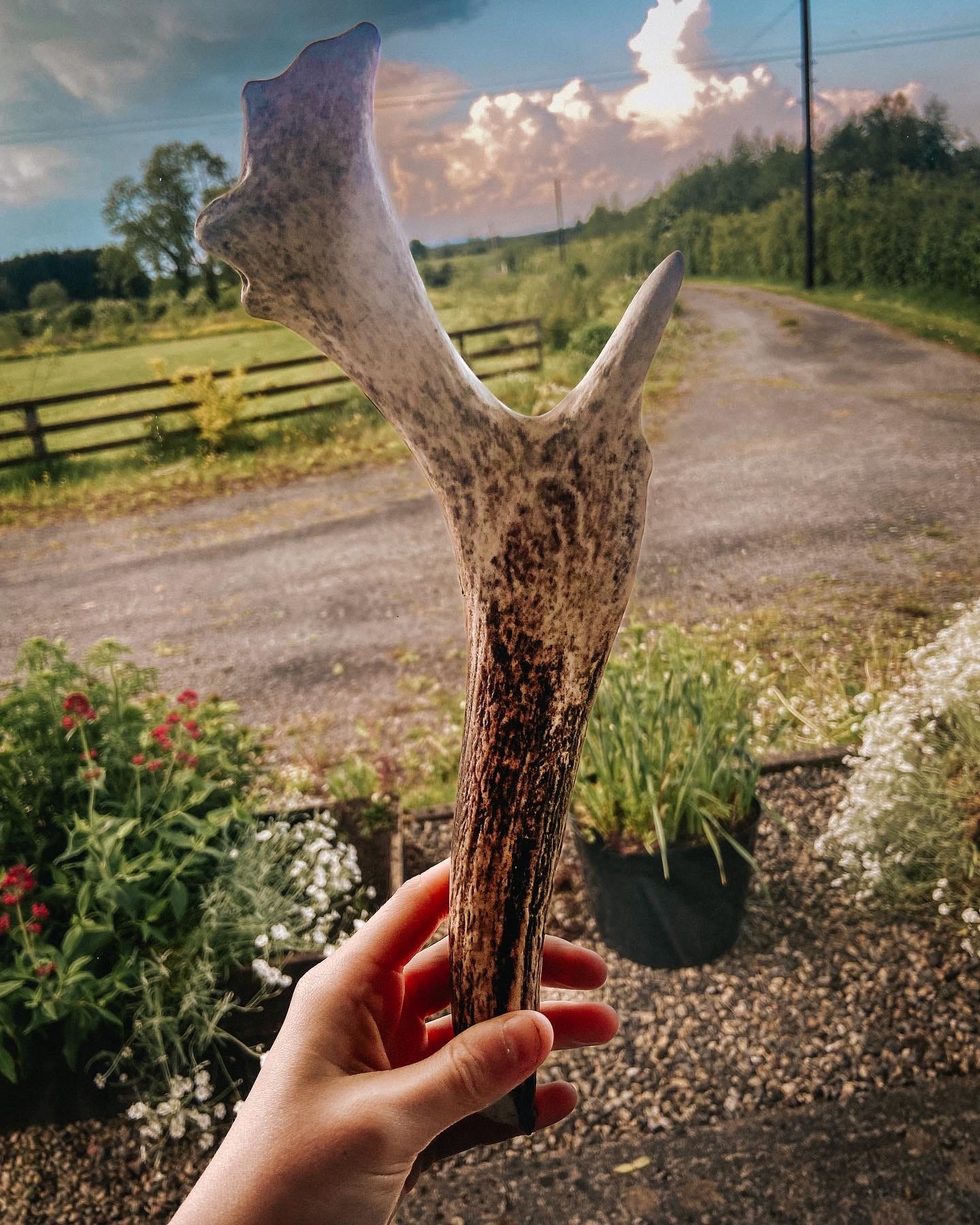The Irish hills are a place of ancient magic. When wandering through the undulating valleys, the curves and movement of the land, it’s easy to understand why there is so much folklore and mystery in this place.
It’s May, and the world is well and truly showing off. Grass has never looked more luscious or green, and wildflowers froth on the ridges, nodding in the breeze. Purple heather flecks the mountainsides, interspersed with vivid shades and textures of moss. I brush my hand over the spongy surface as I walk, peering into the hidden worlds within the moss. I always thought it looked like a tiny little kingdom all of its own.
I’m walking in the hills in County Sligo in the West of Ireland, a place filled with a rich history, folklore and magic. We’ve driven down a narrow country lane, praying another car wouldn’t appear on the way up, and parked in a tiny patch of grass that assured us that it was, in fact, a car park.
We’re here to investigate the Carrowkeel complex; an area filled with megalithic passage tomb clusters and ancient monuments. This involves a walk up the hillside, and in the sun-soaked heat of this glorious May day, this is more taxing than otherwise.
This article is a transcript of the YouTube video, which I highly recommend watching to see the tombs and hillsides as I saw them:
Unperturbed, we press on, taking in the stunning scenery and the otherworldly atmosphere of the mountainside.
I have a habit of greeting all things around me and recognising their spirit, and so I speak to the hills, the wildflowers, and I incline my head and give a slight bow to the lonesome hawthorns, the mystical faery trees of Ireland.
As I walked, right before me I found something incredible. It was an antler from a deer, lying waiting for me. It felt like a big warm hug from the land, the most sacred of gifts, and I will admit that I danced around and shouted a big thank you to the mountain. I’ve never found anything like this before, so it felt truly special and made the visit so magical.
We continued up the winding track of the hillside, until we spotted the first cairn in the distance. These passage tombs were built in the 4th millennium BC, during the Neolithic era.
The monuments at Carrowkeel were originally excavated in 1911 by a team led by R.A.S. Macalister, accompanied by Robert Lloyd Praeger and Edmund Clarence Richard Armstrong. These excavations led to an array of findings including animal bones, cremated human remains, human bones, and tools and pottery from the Neolithic Age.
Praeger recorded an account of the first entry into one of the Carrowkeel monuments.
"I lit three candles and stood awhile, to let my eyes accustom themselves to the dim light. There was everything, just as the last Bronze Age man (sic) had left it, three to four thousand years before. A light brownish dust covered all... There beads of stone, bone implements made from Red Deer antlers, and many fragments of much decayed pottery. On little raised recesses in the wall were flat stones, on which reposed the calcinated bones of young children."
There are fourteen passage tombs in the central core of the complex at Carrowkeel. Some can be entered by crawling through a narrow passage, though it’s not recommended to do this, as it’s important to preserve the monuments and look after them. I poked my head in as far as it could go and took a moment to consider this place.
It’s hard to even conceptualise people using these sites so long ago. What did they look like? What did their language sound like? What does this say about their death ritual practises and their beliefs about death and the otherworld?
When we look back into history, I believe we’re often searching for something. Searching for an answer. Did they know a secret that we are missing, or were they just as curious, searching for the answers to unknowable questions on life and death?
We shall never know. But even so, it’s incredible to walk in the footsteps of these people who have gone before as long-lost relatives and friends, and feel a kinship with them.
Thank you for watching, if you’d like to see more about historical sites such as these, as well as all things on living a magical life, please consider subscribing to my Substack and YouTube channel.








Oh wow it looks so beautiful there! And what a cool find the antler was. 💚